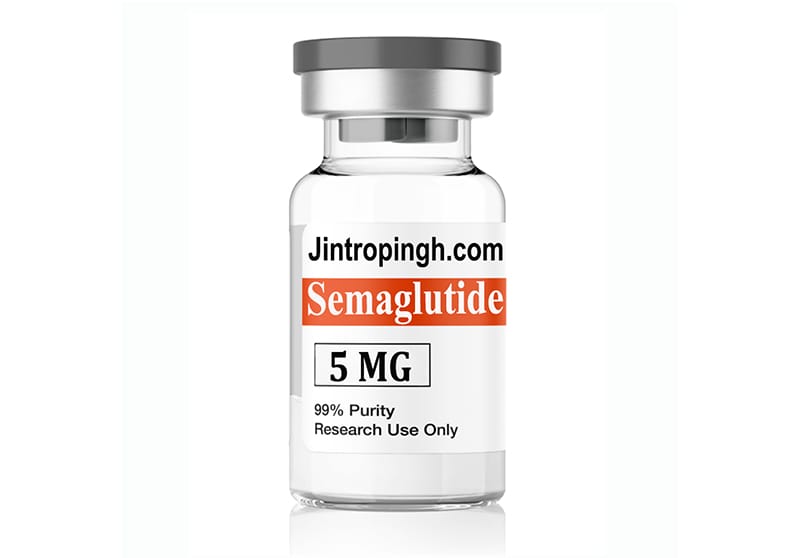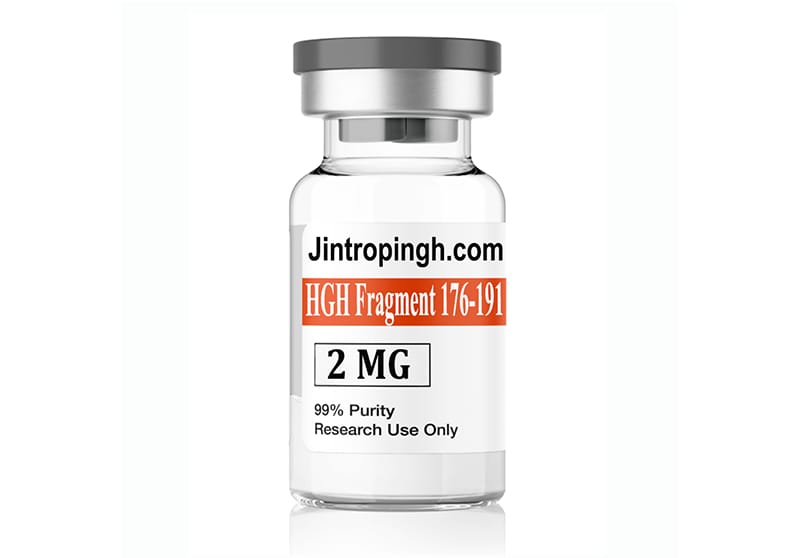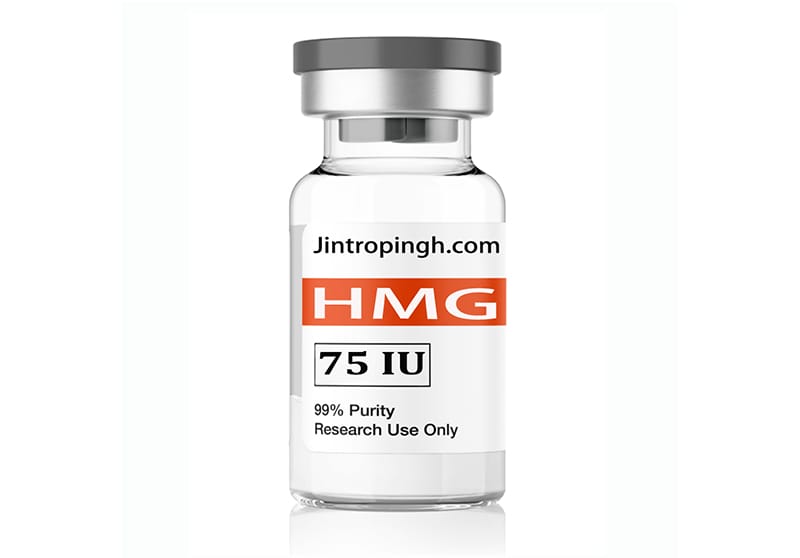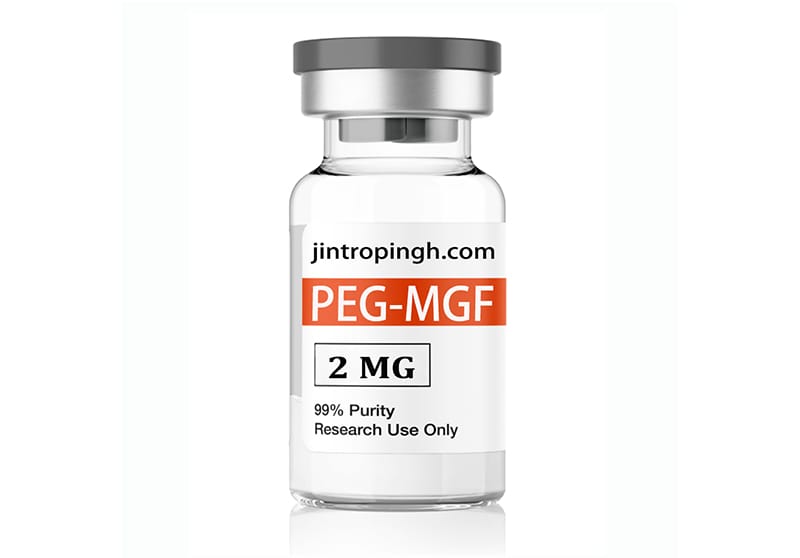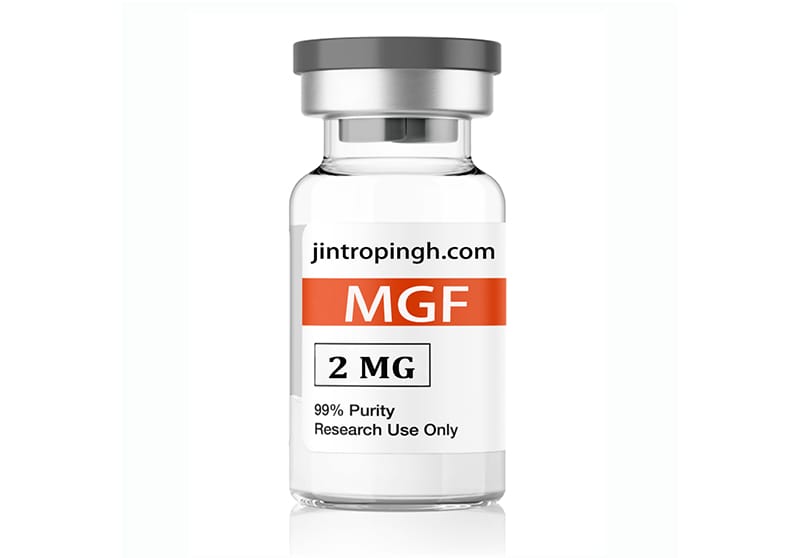Semaglutide GLP-1 Analogue 5mg For Weight Loss And Bodybuilding
Original price was: $100.00.$80.00Current price is: $80.00.
Semaglutide has previously been hailed as a new and effective treatment for obesity, that has been shown to be just as effective at reducing body weight as certain weight loss surgeries.
Semaglutide Injection is works by mimicking hormones that target areas of the brain involved in regulating appetite and food intake. This can help you eat less and lead to weight loss.Semaglutide is the best way for weight loss ,No side effect and gaining popularity quickly.
- Country of origin:
- Package :5mg * 10vials *1kits (50mg/box) ,No water included.
- Price: $30 — $50 per mg
- Minimum Order:2 vials ,5 vials or?1 kits
- Formula :C187H291N45O59
- CAS No. 910463-68-2(free base)
- Storage:2—8? in room temperature
- Delivery: 5-15 days
- Shipping :Room temperature shipping(Stability testing shows this product can be shipped without any cooling measures.)
- Payment: W.U,T.T,Paypal,BTC,USDT
100% delivery
- Satisfaction Guaranteed
- No Hassle Refunds
- Secure Payments
Description
Originally developed by Novo Nordisk, Semaglutide operates by mimicking a hormone in the body known as glucagon-like peptide-1 (GLP-1) which regulates appetite and food intake.
Of particular interest to bodybuilders is how these properties might also encourage muscle growth. While this peptide is primarily known for its use as a weight management drug, emerging research suggests that it may also contribute to muscle hypertrophy.
What Is Semaglutide?
Semaglutide peptide is a synthetic glucagon-like peptide-1 (GLP-1) analog. It is derived from the naturally occurring peptide GLP-1, It is is a GLP-1 agonist. GLP-1 peptide is an endogenous peptide hormone containing 30 amino acids. The primary potential of this compound is to enhance insulin production, reduce blood sugar levels, and conserve the pancreatic beta cells by stimulating insulin gene transcription.
Additionally, the compound delays apparent gastric emptying and hence may suppress appetite. GLP-1 appears to profounding affect the most critical organs, including the heart, kidney, lungs, and liver. Semaglutide, as a GLP-1 receptor agonist, may possibly reduce insulin levels and glucose, reduce appetite, and induce weight loss.
How Semaglutide Work In Bodybuilding?
Recent studies suggest that Semaglutide may have potential benefits for those looking to build muscle.
Semaglutide appetite-suppressing properties helpful in bodybuilding.
Semaglutide is primarily used as a treatment for type 2 diabetes.GLP-1 is a hormone that promotes insulin secretion, slows digestive processes, and suppresses appetite. By reducing hunger pangs, it may allow for more control over diet, a critical aspect of bodybuilding. A more controlled diet could mean more precise calorie and macronutrient intake, potentially offering you an edge in maximizing muscle mass and minimizing body fat.
GLP-1 also aids muscle recovery and helps reduce muscle inflammation post workout.increase muscle growth
Semaglutide helps to increase your insulin sensitivity. Why is this important for muscle growth? Well, insulin plays a key role in stimulating protein synthesis and halting protein breakdown in your muscles.
The science is quite straightforward:
- When insulin sensitivity is increased, your body becomes more efficient at utilizing glucose.
- High insulin sensitivity allows for more glucose to be transported into your muscle cells, providing your muscles with the energy they need to grow.
- Balanced insulin levels help retain muscle during a cut and prevent muscle breakdown
And of course this compound is perfect for burning fat. Various studies have shown that GLP-1 Receptor Agonists can lead to significant weight loss. Lower body fat percentages generally lead to better muscle definition.
Benefits And side effects of Semaglutide in Bodybuilding
Considered a potential powerhouse in the bodybuilding community, semaglutide offers several benefits that are hard to overlook. It’s not all sunshine and rainbows, though, as this substance also presents risks worth pondering. So let’s dive in and take a balanced look at the pros and cons.
Benefits of Semaglutide in Bodybuilding
Firstly, this peptide can promote significant weight loss. This could help you get chiseled faster and more efficiently. Additionally, it has the ability to regulate your blood sugar levels, reducing the risk of energy crashes during intense workouts. Plus, it suppresses appetite, which could help with diet control and calorie restriction during the cutting phase.
A more impressive advantage of semaglutide lies in its potential to improve cardiovascular health. Science has been indicating that it could lower cholesterol levels and reduce blood pressure, making it a potentially heart-healthy ally in your bodybuilding journey.
side effects of Semaglutide in Bodybuilding
On the flip side, it’s crucial to be aware of the potential downsides. One of the main drawbacks of it’s use in bodybuilding is its side effects. You could experience nausea, stomach discomfort, and even reduced kidney function, which isn’t ideal for anyone working hard in the gym.
Moreover, GLP-1 agonists may not be suitable for everyone. People with certain medical conditions, like pancreatitis, gallbladder problems, or alcoholism, should consult a healthcare professional before starting any kind of peptide therapy.
Remember, even though semaglutide can provide these possible benefits, it’s still a prescription medication. Make sure to talk with your doctor before making any drastic changes in your routine or strategy.
Semaglutide Effects or Medical uses
- Regulates Blood Sugar –Semaglutide is indicated as an adjunct to diet and exercise to improve glycemic control in adults with type 2 diabetes. Semaglutide is a glucagon-like peptide-1 receptor agonist. It increases the production of insulin, a hormone that lowers the blood sugar level.It also appears to enhance growth of cells in the pancreas, which are the sites of insulin production. It also inhibits glucagon, which is a hormone that increases blood sugar.
- Weight loss Shuts Down Hunger Cues
Whenever we eat food, the foods we’re eating actually activate the appetite centers in the brain. Under normal conditions, we’d feel full when we’re done eating. This happens due to the release of a gut hormone called GPL-1 that essentially shuts down the brain’s hunger cues.
Some people don’t experience these cues because their bodies aren’t producing the levels of GPL-1 needed to make them feel full and satisfied. When semaglutide is injected, it mimics the GLP-1 hormone to affect the receptors that shut down feelings of hunger.
That means that you’re experiencing complete fullness and satisfaction when either not eating or eating much less food than normal. Studies have found that taking semaglutide is associated with fewer food cravings, less hunger and better control of food intake. Taking semaglutide also results in a lower preference for high fat foods. For many people, using semaglutide weekly marks the end of cravings, frenzied eating, and constant feelings of hunger. may decrease appetite and cause weight loss.
Other uses for this medicine
This medication may be prescribed for other uses; ask your doctor or pharmacist for more information.
What are other name for semaglutide?
Semaglutide is primarily known by its generic name Semaglutide. However, it is also available under different brand names depending on the specific formulation and indication. Some of the brand names for semaglutide are:
1. Ozempic: Ozempic is the brand name for semaglutide used for the treatment of type 2 diabetes. It is available as a once-weekly subcutaneous injection.
2. Rybelsus: Rybelsus is the brand name for oral semaglutide. It is the first and currently the only oral GLP-1 receptor agonist approved for the treatment of type 2 diabetes.
It is important to note that the availability and brand names of medications can vary by country and region. Therefore, it is always advisable to consult with healthcare professionals or refer to reputable sources specific to your region for accurate and up-to-date information on the brand names of semaglutide available in your area.
Semaglutide Side Effects
Get emergency medical help if you have signs of an allergic reaction: hives, itching; dizziness, fast heartbeats; difficult breathing; swelling of your face, lips, tongue, or throat. Serious side effects of semaglutide may include: call your doctor at once if you have:
- vision changes;
- unusual mood changes, thoughts about hurting yourself;
- pounding heartbeats or fluttering in your chest;
- a light-headed feeling, like you might pass out;
- signs of a thyroid tumor–swelling or a lump in your neck, trouble swallowing, a hoarse voice, feeling short of breath;
- symptoms of pancreatitis–severe pain in your upper stomach spreading to your back, nausea with or without vomiting, fast heart rate;
- gallbladder problems–upper stomach pain, fever, clay-colored stools, jaundice (yellowing of the skin or eyes);
- low blood sugar–headache, hunger, weakness, sweating, confusion, irritability, dizziness, fast heart rate, or feeling jittery;
- kidney problems–swelling, urinating less, feeling tired or short of breath; or
- stomach flu symptoms–stomach cramps, vomiting, loss of appetite, diarrhea (may be watery or bloody).
Common side effects of semaglutide may include:
- low blood sugar (in people with type 2 diabetes);
- upset stomach, heartburn, burping, gas, bloating;
- nausea, vomiting, stomach pain, loss of appetite;
- diarrhea, constipation;
- stomach flu symptoms;
- headache, dizziness, tiredness.
This is not a complete list of side effects and others may occur. Call your doctor for medical advice about side effects.
What special precautions should I follow Before Taking Semaglutide Injection?
Before Taking Semaglutide Injection kindly check this? How to use Semaglutide (GLP-1 Analogue) ?
What Is Semaglutide Brand Product?
Wegovy, Ozempic, Rybelsus are the brand Semaglutide product,Each of the different brands of semaglutide (Wegovy, Ozempic, Rybelus) are FDA approved for different conditions.
Semaglutide Dosage
Different dosage levels and what to expect
Dosage
Different doses of semaglutide offer a variety of effects and potential side effects, requiring a tailored regime for every individual. Here, we break down the differences between 0.25mg, 0.5mg, 1mg, and 2mg doses per week, as well as provide recommendations about ramping up dosage over time to mitigate side effects.
Understanding Dose-Specific Implications
- 0.25mg per week: This is generally the starting dose, priming your body for higher doses. It’s lower concentration minimizes the risk of initial side effects, such as nausea and diarrhea.
- 0.5mg per week: Following successful toleration of the 0.25mg dose, a typical next step is to increase to the 0.5mg amount. At this level, you begin to experience considerable benefits, like blood sugar control and modest weight loss.
- 1mg per week: The 1mg dose is often the target for most patients aiming for sustained weight loss. This dosage level enhances the rate of weight loss while still maintaining diabetes control.
- 2mg per week: Currently used for weight management, the 2mg dose accelerates the pace of weight and fat loss. However, it also comes with a heightened risk for side effects and should be considered only under medical supervision.
Recommendations for Incremental Dosage Increase
Graduating from a lower dosage to a higher one should be a slow and considerate process to allow your body to adjust and minimize potential side effects.
Here are some broad suggestions for ramping up semaglutide dosage:
- Week 1-2: Begin with the lowest dose of 0.25mg once weekly. This allows your body to gradually accommodate the new medication and minimizes the initial side effect impact.
- Week 3-4: If you tolerate the 0.25mg dose well, increase to 0.5mg per week. Monitoring your body’s reactions is crucial during this phase.
- Week 5 onwards: Gradually raise the dosage to 1mg per week. Continue monitoring for side effects and adjust the dosage if necessary.
- Extended time frame: If you and your healthcare provider have agreed to try the 2mg dose for intensive weight management, ensure that you have tolerated the 1mg dose over an extended period first.
Concerning timing, it’s advisable to take your dosage at the same time each week. It’s not dependent on meals, thus gives you the flexibility to take it anytime suitable.
Let’s lay out some key points about using Semaglutide:
- Start with a low dose and ramp up over time
- The dosage is usually administered via a weekly subcutaneous injection
- It’s crucial to take the dosage at the same time each week.
Semaglutide Usual Adult Dose for Weight Loss
Initial Dose Escalation Schedule:
- Weeks 1 through 4: 0.25 mg subcutaneously once a week
- Weeks 5 through 8: 0.5 mg subcutaneously once a week
- Weeks 9 through 12: 1 mg subcutaneously once a week
- Weeks 13 through 16: 1.7 mg subcutaneously once a week
Maintenance Dose: Week 17 and onward: 2.4 mg subcutaneously once a week Dosing Considerations:
- If dose escalation is not tolerated, consider delaying dose escalation for 4 weeks
- If the maintenance dose of 2.4 mg once a week is not tolerated, the dose can be temporarily decreased to 1.7 mg once a week for a maximum of 4 weeks
- After 4 weeks, increase dose back to 2.4 mg once a week; discontinue therapy if the patient cannot tolerate the maintenance dose of 2.4 mg once a week
Comments:
- or patients with type 2 diabetes, blood glucose should be monitored at baseline and during treatment.
- This drug should not be coadministered with other semaglutide-containing products or with any other GLP-1 receptor agonist.
- The safety and effectiveness of using this drug in combination with other weight loss products have not been established.
- This drug has not been studied in patients with a history of pancreatitis.
Uses: As an adjunct to a reduced calorie diet and increased physical activity for chronic weight management in adults with an initial body mass index (BMI) of 30 kg/m2 or greater, OR 27 kg/m2 or greater in the presence of at least one weight-related comorbid condition such as hypertension, type 2 diabetes mellitus, or dyslipidemia.
How to Reconstitute Semaglutide?
1.Gather the Necessary Supplies
First things first, you’ll want to make sure you have everything you need at hand:
- The semaglutide vial
- A reconstitution needle
- An injection needle
- A vial of saline or the diluent provided by the manufacturer
- Alcohol swabs
- A clean, flat surface
Double-check that your supplies are not expired and are properly sealed before you begin.
2. Preparation of the Injection Site
Your injection site should be prepped to minimize the risk of infection. Here’s how you do it:
- Choose an injection site – typically the abdomen, thigh, or upper arm.
- Clean the area with an alcohol swab making a circular motion outward from the center. Let it air dry.
- Don’t touch the cleaned area again to keep it sterile.
3. Mixing the Medication
Mixing is crucial for the efficacy of your dose:
- Wipe the top of the semaglutide vial with an alcohol swab.
- Attach the reconstitution needle to the syringe and draw the prescribed amount of saline or diluent.
- Inject the diluent into the vial of semaglutide, aiming the stream of liquid at the vials wall to avoid excessive frothing.
- Gently swirl the vial to mix the solution avoid shaking as it can cause bubbles.
Ensure the mixture is clear and free of particles before proceeding.
4. Administering the Injection
You’re now ready to administer the injection:
- Swap the reconstitution needle with the injection needle if they’re not the same.
- Invert the vial and draw the reconstituted semaglutide into the syringe.
- Flick the syringe gently to rise any air bubbles to the top and then expel them.
- Pinch the skin at the prepared injection site and insert the needle at the angle recommended by your healthcare provider.
- Push the plunger down slowly and steadily to administer the dose.
- Once done, release the skin and withdraw the needle.
Dispose of the needle safely in a sharps container. Always follow specific medical advice provided by your healthcare provider and refer to product labeling for exact details.
What Should I Do If I Miss A Semaglutide Dose?
MISSED DOSE for TYPE 2 DIABETES:
- If a dose is missed, administer as soon as possible within 5 days after the missed dose; if more than 5 days have passed, skip the missed dose and administer the next dose on the regularly scheduled day, resume regular once a week dosing
- Day of weekly administration may be changed as long as the time between doses is greater than 48 hours
MISSED DOSE for WEIGHT LOSS:
- If 1 dose is missed and the next scheduled dose is more than 2 days away (48 hours), administer as soon as possible
- If one dose is missed and the next scheduled dose is less than 2 days away (48 hours), do not administer the dose.; resume dosing on the regularly scheduled day of the week
- If more than 2 consecutive doses are missed, resume dosing as scheduled or, reinitiate following the dose escalation schedule, which may reduce the occurrence of gastrointestinal symptoms associated with reinitiation of treatment
What happens if I overdose?
In case of overdose, If you take too much Semaglutide, call your healthcare provider or seek medical advice promptly. Information is also available online at Poison Help If the victim has collapsed, had a seizure, has trouble breathing, or can’t be awakened, immediately call emergency services.
Semaglutide Storage &Disposal
- Before dilution,Store Semaglutide in a refrigerator at 2℃ to 8℃ (36℉ to 46℉) and avoid frozen.
- If needed, each single-dose pen or single-dose vial can be stored unrefrigerated at temperatures not to exceed 30℃ (86℉) for up to 21 days.
- Once you’ve mixed it, you’ve got a time limit. Use the medication within 30 days, or it’s no longer good to go.
- Do not freeze Semaglutide. Do not use Semaglutide if frozen.
- Store Semaglutide in the original carton to protect from light.
Dispose of Used Needles and Syringes Safely
You’re done with your injection, but you’re not done with the process. Needles and syringes pose a risk if disposed of carelessly. Securely place them in a sharps disposal container immediately after use. No sharps container on hand? You can use a heavy-duty plastic container as a temporary fix. Just make sure it’s appropriately sealed and labeled to prevent accidental pokes. Remember to check local guidelines for disposal; don’t just toss them in the trash.
Seek Medical Attention for Any Adverse Reactions
You’ve done everything right, but your body may still react unpredictably. If you notice anything off, particularly serious side effects like trouble breathing or severe abdominal pain, seek medical attention immediately. These aren’t just little hiccups they can signify something more critical. Keep your healthcare provider’s info handy for quick reference in case things go south. They’ll need to know everything about the reaction to give you the best care.
Semaglutide Summary
Mastering the reconstitution of semaglutide ensures you’re getting the full benefit of your treatment. Remember, precision in preparing your dose can make a significant difference in managing your health. Always prioritize cleanliness, adhere to the guidelines for mixing, and inject as instructed. Proper storage and disposal are just as crucial for safety. If you encounter any issues or have concerns, don’t hesitate to reach out to your healthcare provider. With these practices in place, you’ll be well-equipped to handle your semaglutide therapy with confidence.
F.A.Q (Frequently Asked Questions)
How does semaglutide work for weight loss?
Semaglutide works by mimicking the effects of a hormone called GLP-1. This hormone makes you feel fuller after meals, so you eat less, which leads to body weight and fat loss. This is also beneficial for people with chronically high levels of blood sugar, as it helps in lowering these levels.
What are the benefits of semaglutide?
Semaglutide not only aids in body weight and fat loss but also helps to control low blood sugar levels. It’s beneficial for those who have difficulty losing weight through lifestyle changes alone. It also reduces the risk of heart disease. It’s essential to note that the benefits of semaglutide should be complemented with lifestyle changes including diet and exercise for more effectiveness.
How do I take semaglutide?
The dosage is usually administered as an under-the-skin injection once a week. Note: Always consult with your healthcare provider for personalized advice, as the information presented is for informational purposes only, and not a substitute for professional medical advice.
How does Wegovy contribute to weight loss?
Semaglutide helps you lose weight by making you feel fuller after eating. This sensation prompts you to eat less, which in turn leads to a decrease in body weight.
What are the potential risks with using semaglutide?
Like all medications, semaglutide has potential risks, including inflammation of the pancreas. It may also cause low blood sugar levels when used with other diabetic medication. Seek medical attention immediately if you experience any severe or unusual side effects.
What is the correlation between semaglutide and GLP-1?
Semaglutide works by mimicking the effects of a hormone called GLP-1. This hormone is produced in the intestine and the brain and is released after meals. It encourages the body to eat less by making one feel fuller, resulting in weight loss.
Does semaglutide get rid of excess fat?
Yes, semaglutide does help in reducing excess fat. It works by making you feel fuller which leads to less eating and weight loss. But it’s also important to maintain a balanced diet and exercise regularly along with the semaglutide treatment.
Is semaglutide used to treat types of diabetes?
Yes, it is used to treat type 2 diabetes. It lowers blood sugar levels by mimicking the effects of a hormone called GLP-1. It’s also been found to aid in weight loss and reduce the risk of heart disease in these patients.
Do I have to maintain a diet while using GLP-1 agonists?
Yes, it’s highly recommended to maintain a healthy eating lifestyle while using semaglutide. The medication works better when complemented with a healthy diet and regular exercise. Therefore, glp-1 receptor agonists are not a quick-fix remedy; weight loss results are more likely to be seen when combined with other lifestyle changes.

